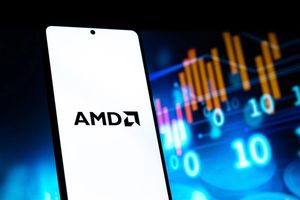
The nascent foldable smartphone market is currently navigating a pivotal phase, marked by a tempering of its explosive growth in 2024 and 2025, even as relentless innovation continues to push the boundaries of mobile technology. Once lauded as the next frontier in personal electronics, foldables are experiencing a short-term plateau, with projections indicating a stabilization in demand around 22 million units. This slowdown, however, belies a deeper narrative of technological refinement, intensifying competition, and a strategic recalibration by industry giants aiming for broader consumer acceptance.
Despite the immediate deceleration, the long-term outlook for foldable smartphones remains robust, with market size estimates soaring to nearly $119 billion by 2030. This optimistic forecast hinges on manufacturers’ ability to overcome persistent challenges like high price points, durability concerns, and software optimization, while simultaneously captivating consumers with enhanced functionality and novel form factors. The competitive landscape is rapidly evolving beyond early pioneer Samsung, with a surge of ambitious players vying for market dominance and shaping the trajectory of this still-niche, yet immensely promising, segment.
The Folding Revolution Encounters a Moment of Truth
The journey of foldable smartphones from futuristic concept to consumer reality has been characterized by both awe-inspiring technological leaps and significant growing pains. Initially spearheaded by companies like Samsung Electronics Co. (KRX: 005930), the market saw exponential growth between 2019 and 2023. However, 2024 and 2025 are witnessing a projected slowdown, with some analyses suggesting growth as low as 5% and even a slight decline in 2025 before a projected resurgence. This indicates that while the novelty factor has garnered attention, the technology is now facing the tougher task of proving its sustained value proposition to a wider audience.
Recent developments underscore a crucial period of maturation. Manufacturers are not just iterating but fundamentally refining the technology. The Samsung Galaxy Z Fold 7, launched in July 2025, exemplifies this push, featuring a significantly thinner and lighter design (4.2mm, 215g), a more ergonomic outer screen, a 200MP main camera, and the powerful Snapdragon 8 Elite for Galaxy chipset. Its sister device, the Galaxy Z Flip 7, released a month later, boasts an enlarged 4.1-inch external display and enhanced battery life. Beyond Samsung, the industry is witnessing a parade of advanced devices: Huawei Technologies Co. Ltd. (SHE: 002502) introduced the world’s first tri-fold phone in Q3 2024, the Motorola Mobility LLC (a Lenovo subsidiary) Razr 60 series gained significant traction for its affordability and durability (400,000 folds), and Alphabet Inc. (NASDAQ: GOOGL)'s Pixel 10 Pro Fold became the first foldable to achieve an IP68 rating for water and dust resistance, a critical milestone for mainstream appeal. These advancements directly address consumer anxieties regarding durability and practicality, which have historically been major barriers to adoption.
The competitive landscape is undergoing a dramatic reshuffling. While Samsung historically dominated, its global market share for foldable panels is expected to decline, and its overall market share reportedly plummeted from 21% in Q2 2024 to just 9% in Q2 2025, though it retains a strong position in the flip segment. Huawei, buoyed by strong domestic demand, has staged a remarkable comeback, leading foldable shipments in Q1 and Q4 2024 and reaching an impressive 45% market share in Q2 2025. Motorola has also emerged as a potent challenger, climbing to second place globally in Q2 2025 with 28% market share, largely due to its aggressive pricing and Razr series sales. Other notable players include Honor Device Co., Ltd., OnePlus Technology (Shenzhen) Co., Ltd. with its well-received Open model, and Xiaomi Corporation (HKG: 1810), OPPO Mobile Telecommunications Corp., Ltd., and Vivo Communication Technology Co. Ltd., who continue to develop their offerings despite struggling with sales volumes. This intensified competition is a direct driver of innovation, forcing manufacturers to differentiate through design, features, and pricing.
Initial market reactions to the latest generation of foldables are cautiously optimistic. While the short-term growth statistics suggest a more measured consumer uptake, the significant technological improvements are generating positive buzz among tech enthusiasts and early adopters. Pre-orders for devices like the Samsung Galaxy Z Fold 7 reportedly more than doubled those of its predecessor, indicating a strong interest in refined foldable experiences. However, the high price point, often exceeding $1,800 for flagship models, remains a significant hurdle for widespread adoption, as does the perceived lack of compelling practical advantages over traditional smartphones for a large segment of consumers.
A Shifting Mosaic of Winners and Losers
The evolving foldable smartphone market is creating a clear hierarchy of winners and losers, with strategic positioning, innovation, and aggressive market penetration defining success.
Samsung Electronics Co. (KRX: 005930), while still a dominant force and a pioneer in the foldable space, is facing increasing pressure. The company is experiencing a reduction in its overall foldable market share, dropping significantly in Q2 2025. This indicates a loss of its early-mover advantage as competitors catch up and even surpass its offerings in certain regions or form factors. To win, Samsung must continue its rapid innovation cycle, as evidenced by the slimmer Z Fold 7 and the rumored tri-fold device, and potentially adjust pricing strategies to combat rising competition, particularly from Chinese brands.
Huawei Technologies Co. Ltd. (SHE: 002502) has emerged as a clear winner, especially within its domestic market. Its ability to innovate with devices like the Mate X5 and the world's first tri-fold phone has allowed it to capture significant market share, reaching 45% in Q2 2025. This resurgence, despite geopolitical challenges, demonstrates its strong R&D capabilities and consumer loyalty in key markets. Motorola Mobility LLC, leveraging its nostalgic Razr brand and aggressive pricing, has also become a significant winner. Its rise to second place globally in Q2 2025 showcases the power of a balanced strategy combining brand recognition, competitive pricing, and solid product development.
Other brands like Honor Device Co., Ltd. and OnePlus Technology (Shenzhen) Co., Ltd. are also making headway. Honor's Magic V5, with its thin design and powerful battery, and OnePlus's Open, praised for its multitasking and value, are positioning these companies as strong contenders who are effectively challenging the established order. These players benefit from offering competitive features at often more accessible price points, appealing to a broader segment of tech-savvy consumers.
Conversely, companies that have struggled to gain significant traction, such as Xiaomi Corporation (HKG: 1810), OPPO Mobile Telecommunications Corp., Ltd., and Vivo Communication Technology Co. Ltd., might be considered lagging in this segment. Despite their strong presence in the traditional smartphone market, their foldable offerings have yet to achieve substantial sales volumes, often falling below 1 million units in 2024. Their challenge lies in differentiating their products in a crowded field and convincing consumers that their foldables offer a superior experience worthy of the premium price tag. For these companies, a significant strategic pivot or a breakthrough innovation will be crucial to securing a meaningful foothold.
Industry Evolution and Broader Implications
The trajectory of foldable smartphones is not merely about device sales; it represents a significant inflection point in the broader mobile technology landscape, with profound implications for industry trends, competitive dynamics, and future technological paradigms. The current market slowdown, while a reality, should be viewed as a natural phase of consolidation and refinement, similar to what other nascent technologies have experienced. It signals a shift from novelty-driven adoption to a more critical evaluation of value, utility, and durability by consumers.
This period fits into a broader industry trend of smartphone diversification and the search for the "next big thing" beyond incremental upgrades to traditional slab phones. As traditional smartphone sales mature, foldables offer a new avenue for growth and premiumization. Their evolution is pushing the boundaries of material science, hinge engineering, and display technology, which could have ripple effects across other consumer electronics, potentially influencing the design of laptops, tablets, and even wearables. The focus on ultra-thin glass (UTG), advanced flexible OLEDs, and robust hinge mechanisms drives innovation that can benefit various display-centric devices.
The intensifying competition, particularly from Chinese manufacturers like Huawei and Honor, is a major trend. This challenges the established dominance of South Korean and American tech giants and fosters a more dynamic, globally competitive market. This could lead to faster price erosion, greater feature innovation, and potentially a broader range of form factors as companies seek to differentiate. The entry of Alphabet Inc. (NASDAQ: GOOGL) with its Pixel Fold line also signifies a commitment from a major software ecosystem player, which can accelerate Android optimization for foldable screens and influence how developers design applications for adaptive displays.
While direct regulatory or policy implications are not yet prominent, the increasing complexity of these devices, especially with advanced AI integration (like Android 16's Gemini Live), might eventually lead to discussions around data privacy, AI ethics, and device repairability. Historically, the evolution of new smartphone form factors, from flip phones to touchscreens, has always triggered shifts in consumer behavior and industry standards. The current phase of foldables can be compared to the early days of smartphones where different operating systems and hardware designs competed fiercely before coalescing around dominant platforms. The success of foldables hinges on achieving a similar level of seamless integration between hardware and software, making the folding experience intuitive rather than a gimmick.
The Horizon: What Comes Next
The immediate future of foldable smartphone technology will likely be characterized by continued refinement, a push towards greater affordability, and a widening array of form factors. In the short term, expect manufacturers to redouble efforts on enhancing durability, particularly through improved hinge designs and more resilient screen materials. The quest for "crease-less" displays and robust dust and water resistance, exemplified by the Pixel 10 Pro Fold's IP68 rating, will be paramount. Pricing strategies are also critical; as production scales and competition heats up, the entry-level price for foldables is expected to drop, making them accessible to a larger demographic. Innovations like Samsung’s rumored tri-fold device and even rollable phone concepts from various brands suggest that the exploration of new mobile paradigms is far from over.
Looking further ahead, the long-term possibilities are even more transformative. The highly anticipated entry of Apple Inc. (NASDAQ: AAPL) into the foldable market, rumored around 2026, is widely considered a potential game-changer. An "iPhone Fold" would not only legitimize the category in the eyes of many mainstream consumers but also likely spur significant developer interest, leading to a richer, more optimized software ecosystem for foldable displays. Apple's meticulous approach to design and user experience could set new benchmarks for the entire industry. This could trigger an accelerated shift from niche product to mainstream staple, potentially mirroring the iPhone's impact on the broader smartphone market.
Market opportunities will emerge as foldables transition from early adopter devices to more widespread appeal. This includes not just hardware sales but also the growth of accessories, specialized software, and new use cases in productivity, gaming, and media consumption that leverage the larger screen real estate. Challenges will persist, particularly in battery life optimization for dual or larger displays and the ongoing need for app developers to fully embrace and design for adaptive screen environments.
Potential scenarios range from foldables remaining a premium niche for power users to becoming a significant, if not dominant, segment of the overall smartphone market. The most likely outcome involves a gradual but steady increase in adoption, fueled by lower prices, enhanced reliability, and the compelling utility of a device that seamlessly transforms between phone and tablet. Strategic pivots for manufacturers will involve choosing between specialized premium offerings and mass-market appeal, and investing heavily in both hardware innovation and software ecosystem development.
Conclusion: A Flexible Future Unfolding
The foldable smartphone market stands at a fascinating juncture, poised between the initial euphoria of innovation and the pragmatic demands of mainstream adoption. While the current market is experiencing a period of tempered growth, the underlying narrative is one of resilient technological advancement and a fierce competitive drive. Key takeaways include the rapid evolution of hardware, with thinner designs, better cameras, and improved durability becoming standard, and the significant shift in market share, particularly with the rise of Chinese brands and Motorola challenging Samsung's early dominance.
Moving forward, the market will be defined by how effectively manufacturers can bridge the gap between cutting-edge technology and everyday consumer needs. Overcoming the hurdles of high cost, perceived fragility, and the need for greater software optimization will be crucial. The impending entry of tech giants like Apple is expected to act as a catalyst, potentially revolutionizing consumer perception and accelerating widespread acceptance of the form factor.
Investors should closely watch several key indicators in the coming months: the pricing strategies of major players, particularly how aggressive they become in lowering entry barriers; the pace of innovation in hinge and display technology to mitigate durability concerns; and the progress in software optimization across Android and potentially iOS platforms for seamless adaptive experiences. The race to deliver a truly indispensable foldable device—one that offers undeniable practical advantages at an accessible price point—will determine which companies ultimately triumph in this exciting, flexible future. The foldable phone is no longer just a gadget; it's a testament to the industry's continuous quest for innovation, and its long-term impact on how we interact with mobile technology is only just beginning to unfold.





